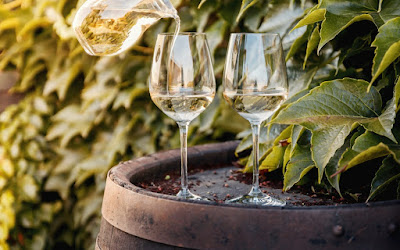10 Low Tannin Red Wines to Try Right Now
Within the realm of winemaking, where sun-kissed vineyards paint the landscape, and the delicate dance of crafting wines takes center stage, an enigmatic element known as tannin emerges as a masterful architect, molding the very essence of a wine's personality. Derived from the skins, seeds, and stems of grapes, tannins are natural compounds that contribute to a wine's structure, texture, and flavor profile. These compounds, also found in plants like tea leaves, exhibit a subtle bitterness and astringency that can have a profound impact on your tasting experience. As you explore the intriguing realm of flavors and aromas, consider how tannins interact with the red wines you encounter, guiding your journey through the mesmerizing world of online wine stores.
Tannins originate from the grape's journey from vine to bottle. During the winemaking process, when the grapes are crushed and fermented, the skins, seeds, and stems come into contact with the juice. This interaction releases these compounds, infusing the wine with their distinct attributes. As the wine ages in barrels or bottles, tannins interact with other elements, gradually softening and evolving in character.
Detecting tannins involves a sensory interplay between your palate and the wine's essence. When you take a sip, you might notice a dry sensation, similar to the feeling of overstepped tea. This sensation arises from the tannins binding to proteins in your saliva. The degree of astringency can vary, from a gentle caress to a more assertive grip on your tongue. Tannins are more pronounced in red wines due to the extended contact of the grape skins during fermentation.
Beyond their tactile presence, tannins are crucial players in the world of wine and food pairing. They interact with proteins in your food, creating a harmonious balance or a stark contrast. Red wines with higher tannin levels can pair wonderfully with protein-rich dishes, like red meat, as the tannins help cut through the richness and cleanse the palate. Meanwhile, low-tannin reds and white wines with softer tannins might find perfect companionship with lighter fare, such as seafood or poultry.
Now, let's delve into the world of low-tannin red grape varieties, each offering a unique expression that you can discover and enjoy, whether you're visiting a local wine store USA or choosing to order wine online.
-
Gamay
Gamay, the star of Beaujolais, enchants with its low tannin profile. Antoine Sunier Morgon's red wine bottle captures the essence of Gamay, boasting juicy red fruit notes and a smooth, approachable structure.
-
Pinot Noir
A diva of elegance, Pinot Noir dances with subtle tannins. Mt. Beautiful Pinot Noir's red wine bottle showcases the grape's hallmark silkiness, accompanied by fruity and floral complexities.
-
Barbera
The Italian Barbera grape variety shines with vibrant acidity and gentle tannins. Elio Altare Barbera d'Alba red wine epitomizes the varietal, flaunting lively red fruit flavors and a soft embrace with lower alcohol.
-
Dolcetto
Dolcetto, Italian for "little sweet one," offers charmingly low tannins. Mengler Family Wines Alegria Vineyards Dolcetto envelops the palate with black cherry nuances and a smooth finish.
-
Valpolicella
A classic from Italy's Veneto region, Valpolicella is known for its inviting nature and mild tannins. Farina Montecorna Valpolicella Ripasso Classico Superiore red wine bottle marries vibrant red fruit with a touch of spice.
-
Lambrusco
Lambrusco, a fizzy delight, features delicate tannins. Bruno Zanasi Lambrusco Grasparossa di Castelvetro Italian wine infuses your glass with effervescence and bright red berry notes.
-
Grenache/Garnacha
Grenache beckons with soft tannins and succulent red fruit. Langmeil Rough Diamond Grenache red wine exemplifies the variety's charm, balanced by a silky texture and black cherry flavor.
-
Zinfandel
Zinfandel, known for boldness, also offers variations with gentle tannins. Ironstone Reserve Old Vine Zinfandel from Napa Valley introduces you to its richness while maintaining an accessible demeanor.
-
Schiava
Schiava, from Alpine Heights, exhibits minimal tannins. Franz Gojer St. Magdalener Classico's low-tannic wine bottle invites you to explore its light body, bright red fruit, and a touch of Alpine air.
-
Cinsault
Cinsault, often used in blends, embraces low tannin levels. Perlegos Cinsaut showcases its floral and red fruit notes and jasmine flavour, making it a good partner for light sauced red meat.
As you explore the realm of low-tannin red wine bottles, we invite you to elevate your tasting experience by visiting our BottleBarn blog page and experiencing the ease of ordering wine online platform.
Should the allure of these wines captivate your senses, our online wine store stands ready to introduce you to a diverse collection of wines from around the world. Allow the symphony of flavors and textures to guide you through the enchanting world of low tannin red wines.




Comments
Post a Comment